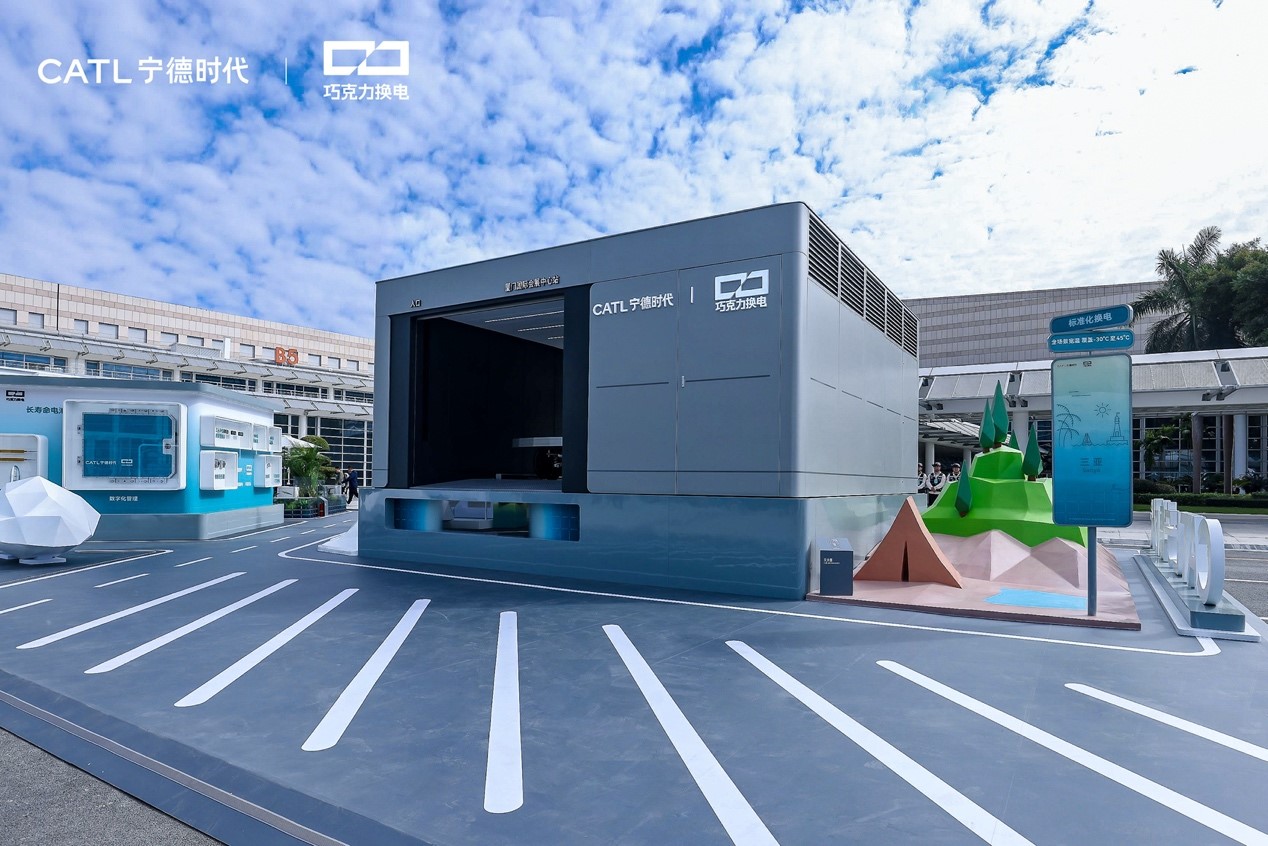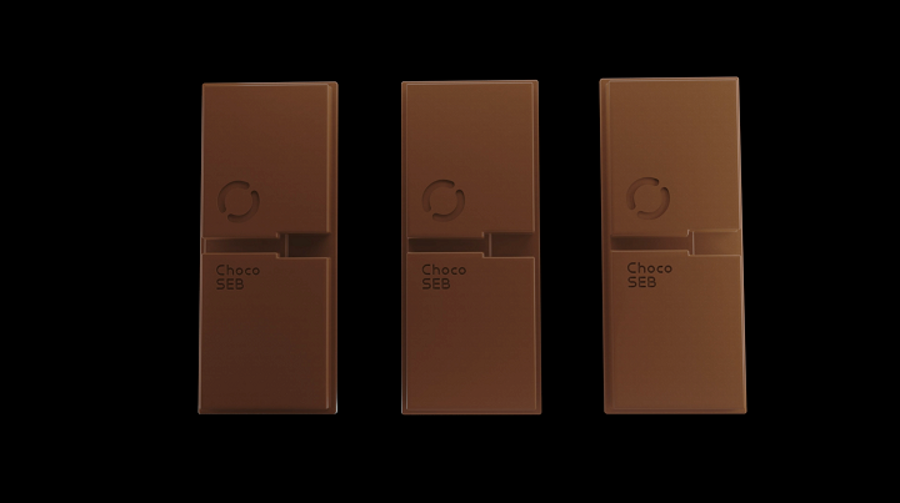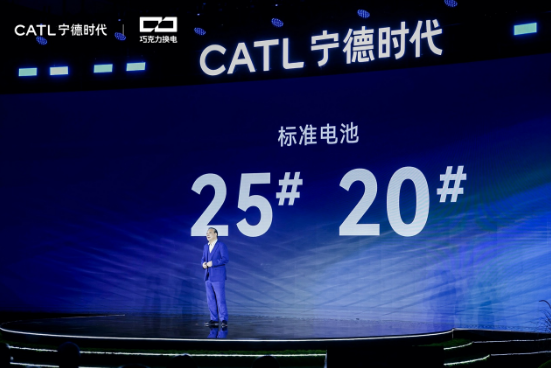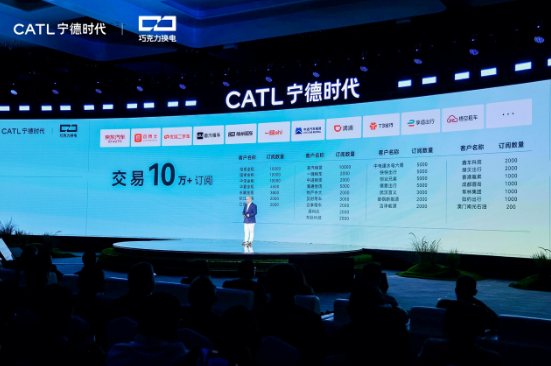What is CATL's“Chocolate Battery Swap”?
Published: February 12, 2025 16:43
It might sound like a treat for the holiday season, but "Chocolate Battery" is actually a cutting-edge technology embedded in the batteries of electric vehicles. Developed byCATL (Contemporary Amperex Technology Co., Ltd.), the world’s leading electric vehicles (EVs) battery manufacturer from China, it represents a major leap in sustainable energy solutions.
According to reports from Sina Finance, on January 13, 2025, CATL , FAW Hongqi, and Longsing New Energy jointly announced the groundbreaking ceremony for Hong Kong’s first Chocolate Battery Swap Station for passenger vehicles, located at Ping Che Road in Fanling, New Territories. This marks Hong Kong's first battery swap station for passenger cars.
According to information from the official "Chocolate Battery Swap" platform, CATL, FAW Hongqi, and Longsing New Energy plan to establish a network of "Chocolate Battery Swap Stations" across Hong Kong and deploy Hongqi E-QM5 electric taxis. The long-term goal is to build a comprehensive new energy travel network through the "Chocolate Battery Swap" model, covering Hong Kong and extending its influence to the ASEAN region. This collaboration not only strengthens Hong Kong's green transportation infrastructure but also capitalizes on its unique role as a gateway to the international market, opening up new opportunities for CATL's Chocolate Battery Swap ecosystem to expand globally.

source: CATL
But how exactly does it work?
The core of "Choco-Swap", the new battery swapping solution, lies in the "Choco-Swap Blocks", which are modular battery units designed to be quickly swapped in electric vehicles. This innovation addresses EV owners’ range anxiety by enabling fast and efficient battery replacement.
The technology is eco-friendly and low-carbon as well: centralized battery management extends battery lifespan and reduces waste. What's more, swapping stations can integrate renewable energy sources to minimize carbon emissions.
Just Imagine the battery in your EV as a delicious chocolate bar, and the swap station as a chocolate store. When your EV’s battery is running low, there’s no need to wait for hours to recharge. Instead, you can drive to this "chocolate store" (swap station), where the staff will swiftly remove your drained "chocolate battery" and replace it with a fully charged one, much like grabbing a new chocolate bar from the shelf. The entire process takes just about 1.5 minutes, allowing your car to get back on the road, re-energized—just like you would after eating a chocolate bar.

source: CATL
What Are the Pros and Cons of Chocolate Battery Swap Technology?
The Choco-Swap system offers nine key advantages: batteries are chargeable, swappable, upgradeable, leasable, purchasable, buy-backable, visible, manageable, and optimizable.
- Cross-Brand Compatibility
These "chocolate batteries" are standardized, much like LEGO bricks, meaning they can be used across different EV models. This standardization significantly reduces R&D and manufacturing costs for automakers.
The standardized design eliminates compatibility barriers between different brands and models of electric vehicles, allowing EVs from various manufacturers to share a unified battery-swapping network. This fosters cross-brand collaboration and exchange, creating an open and shared battery-swapping ecosystem, which in turn drives the overall development of the EV industry.
- Battery Leasing & Maintenance
The battery swapping model offers convenience to users through the separation of the vehicle and the battery. CATL plans to introduce two standardized Chocolate Battery Swap Blocks, named 20# and 25#, allowing users to transition from the traditional model of purchasing entire batteries to a pay-as-you-use approach. This ensures that each battery block delivers maximum value.
Standardized batteries allow professional battery management teams to provide unified maintenance and care, ensuring optimal battery performance and extending battery lifespan. For EV owners, there's no need to worry about battery degradation because the batteries are managed and maintained by a professional team. All you need to do is pay a leasing fee, making it a hassle-free and cost-effective solution.
- Construction of Swap Stations
The standardized design of "Choco-Swap Blocks" provides a unified standard for the construction and operation of swap stations, lowering the complexity and costs of building such infrastructure. This standardization also attracts more companies to participate in the construction and operation of swap stations, accelerating the development of battery-swapping infrastructure.
- Operational Challenges
Implementing a battery swapping network requires significant investment in infrastructure in different countries and areas, including the construction of swap stations and the production of standardized batteries. This can pose challenges, especially in regions with limited EV adoption and even electricity.

Revolutionary Potential of Chocolate Battery Swap Technology
According to reports from Power Battery Network, CATL has demonstrated a proactive approach in the battery swapping business. In December 2024, CATL held the Chocolate Battery Swap Ecosystem Conference in Xiamen, China, announcing the rebranding of its EVOGO battery swap brand to Chocolate Battery Swap. CATL Chairman Robin Zeng stated that battery swapping, home charging, and public charging stations will play crucial roles in future energy replenishment models for electric vehicles.
Why it matters?
The convenience of battery swap stations makes "charging anxiety" a thing of the past, while flexible leasing options better align with the practical needs of global drivers. With adequate infrastructure in place, driving an electric vehicle in the future could be as convenient as operating a traditional gasoline car—only smarter and more eco-friendly.
Furthermore, it is not just a solution for today’s challenges but also a platform for future innovation. It has the potential to expand beyond vehicles, influencing other sectors such as logistics, renewable energy storage, and smart city infrastructure. By enabling smarter, greener, and more flexible energy usage, it sets a new benchmark for innovation in the clean energy era.

